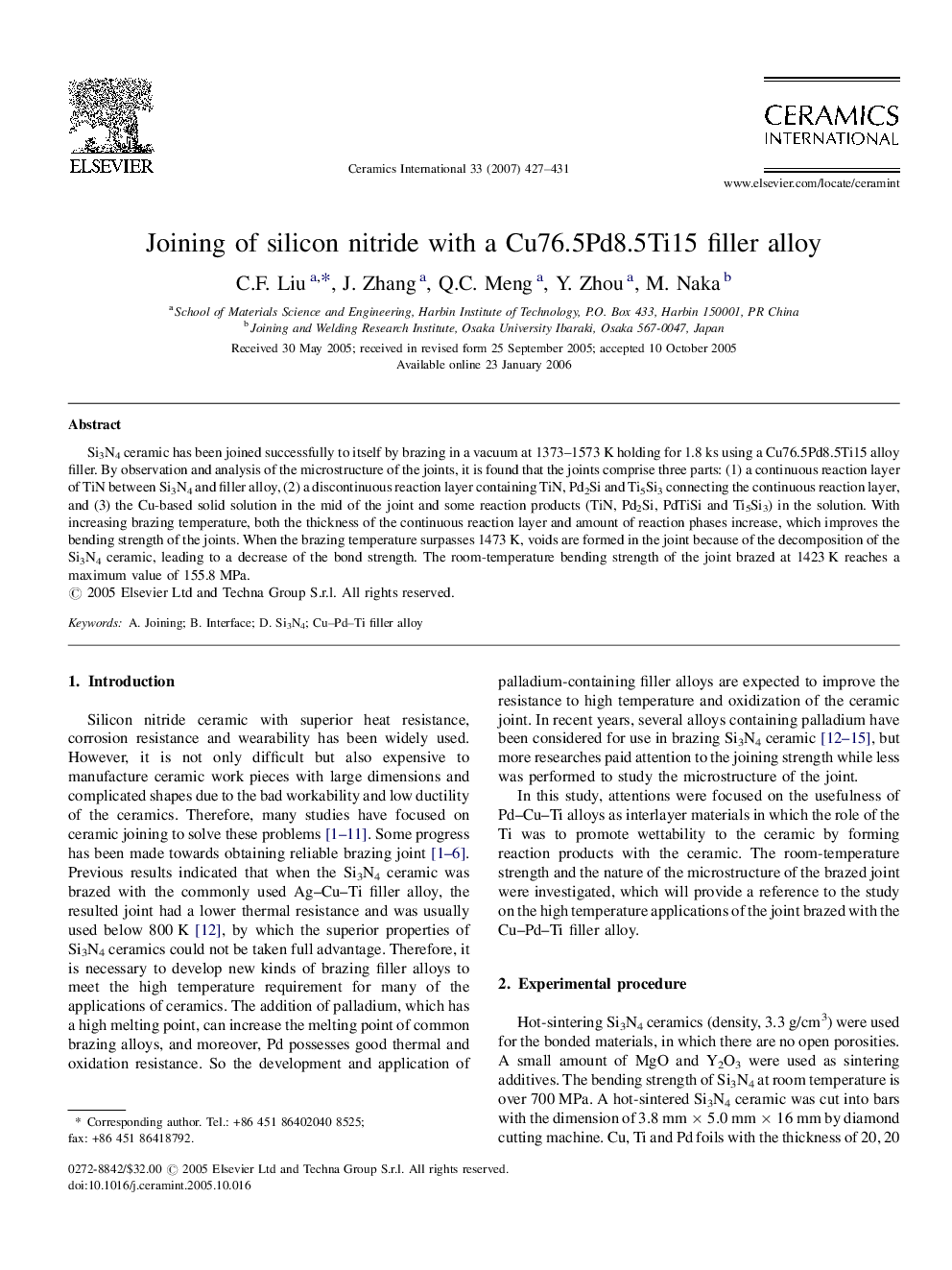| کد مقاله | کد نشریه | سال انتشار | مقاله انگلیسی | نسخه تمام متن |
|---|---|---|---|---|
| 1464935 | 989675 | 2007 | 5 صفحه PDF | دانلود رایگان |

Si3N4 ceramic has been joined successfully to itself by brazing in a vacuum at 1373–1573 K holding for 1.8 ks using a Cu76.5Pd8.5Ti15 alloy filler. By observation and analysis of the microstructure of the joints, it is found that the joints comprise three parts: (1) a continuous reaction layer of TiN between Si3N4 and filler alloy, (2) a discontinuous reaction layer containing TiN, Pd2Si and Ti5Si3 connecting the continuous reaction layer, and (3) the Cu-based solid solution in the mid of the joint and some reaction products (TiN, Pd2Si, PdTiSi and Ti5Si3) in the solution. With increasing brazing temperature, both the thickness of the continuous reaction layer and amount of reaction phases increase, which improves the bending strength of the joints. When the brazing temperature surpasses 1473 K, voids are formed in the joint because of the decomposition of the Si3N4 ceramic, leading to a decrease of the bond strength. The room-temperature bending strength of the joint brazed at 1423 K reaches a maximum value of 155.8 MPa.
Journal: Ceramics International - Volume 33, Issue 3, April 2007, Pages 427–431